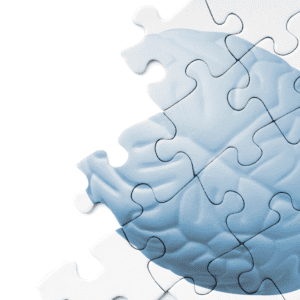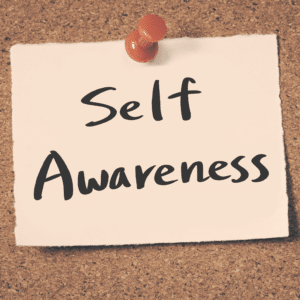介紹
在教學方面,科技發揮重要作用。它有可能使課堂對學生更具吸引力,提高他們對內容的理解,並使教師的工作更加輕鬆。以下部分提供了美國各地課堂上如何發生這種情況的範例:
科技正在改變學生的學習方式。
Technology is changing the way students learn. It can be used to personalize learning, make the classroom more engaging for students, and even help them understand content more deeply than traditional materials do.
One of the most exciting ways technology is helping students learn is through personalization. Personalized learning means that each student receives instruction based on his or her own needs and abilities, which allows teachers to tailor their lessons accordingly. Teachers have access to data about each student’s progress so they can tailor lessons accordingly–for example, if a certain lesson isn’t working for one particular student in class because he doesn’t understand it well enough yet (or at all), then maybe another lesson would work better at this point in time instead of having him sit there frustrated while everyone else moves on without him!
數位學習工具和資源擴展了課堂。
Digital learning tools and resources expand the classroom. In a traditional classroom, students are required to follow along with their teachers and learn at a pre-determined pace. With technology, however, you can allow your students more freedom in how they access and use information from your course materials. This means that each student can learn at their own pace, regardless of whether they are working on their own or with other students around the world.
In addition to allowing for greater flexibility in terms of time management (e.g., allowing students who have busy schedules) these digital tools also provide an opportunity for self-guided learning which enables them to take ownership over their education by making decisions about what works best for them as learners
科技可以讓課堂對學生更具吸引力。
科技可以讓課堂對學生更具吸引力。
- 學生能夠專注於課程,而不會被環境中的其他事物(例如手機或其他可能正在說話的人)分散注意力。
- 科技可以讓學生更有效地學習,因為與閱讀書本或聽別人的講座相比,科技可以讓他們更快地獲得資訊。這對於那些難以長時間靜坐而不被周圍發生的其他事情(例如另一個學生說話)分散注意力的年輕學生特別有幫助。
- 科技透過提供正在討論的主題的視覺表示來使學習變得更有吸引力,以便他們可以看到他們正在學習的內容,而不僅僅是閱讀紙上的單字或聽到其他人(老師)大聲朗讀。例如:如果您在生物課上學習植物,那麼您不僅可以閱讀不同類型的外觀以及它們在哪裡生長得最好,而且實際上可以看到每種類型的圖片及其描述!
科技的使用提高了學生在課堂上的參與度。
最近的一項針對教師的調查發現,那些在課堂上使用科技產品的教師的學生參與度高於那些沒有使用科技產品的教師。當學生可以使用平板電腦、筆記型電腦和手機等技術時,他們更有可能參與課堂。他們也更有可能按時完成作業,因為這些設備允許他們在講座期間做筆記或在課外了解周圍發生的最新情況。如果您曾經接受過一位熱情的老師的教課,他在課程計劃中使用多媒體工具(例如測驗),那麼您就會知道這讓學習新材料變得多麼容易!
科技可用於為學生提供個人化學習。
Technology can be used to personalize learning for students. Students are no longer limited by their physical location or the time of day, and they can access online resources whenever they want. This allows them to learn at their own pace, which is an important factor in student success.
Technology also helps create an interactive classroom experience where students learn about new topics in an engaging way. For example, when using technology like virtual reality (VR), augmented reality (AR) or 3D modeling software you will find that your students become more engaged because they are able to interact with their environment while learning about something new!
新技術可以使教師和管理人員更輕鬆地收集數據。
科技可以使教師更輕鬆地收集學生表現數據並更好地記錄學生表現。此外,科技可以幫助教師收集有關學生行為和出席的數據。
與傳統材料相比,科技可以幫助學生更深入地理解內容。
Technology can help students learn more effectively. Technology has the potential to enhance student learning by enabling them to interact with content in new ways, and by providing opportunities for practice that is more engaging than traditional materials. For example, digital textbooks allow students to review key concepts and terms through interactive videos, animations and 3D models. They also provide multiple choice questions at the end of each chapter so students can test their understanding before moving on. This supports deeper understanding as well as retention of what was learned earlier in the text (Gardner & Clarke 2013).
In addition, technology allows you greater flexibility when designing instruction because it offers a range of methods for presenting information including auditory presentations such as podcasts or videos; visual presentations such as PowerPoint slideshows; interactive games or simulations; activities involving movement like virtual reality games where users physically move around an environment while wearing special goggles connected wirelessly via Bluetooth technology which display images generated by computer graphics cards installed inside personal computers called GPUs -Graphical Processing Units
科技在教師如何教學、學生如何學習以及學校如何運作方面發揮著重要作用。
Technology is a tool, not a solution. It can help teachers, students and schools by making things easier for them. But it is not a panacea that will solve all our problems just because we have new technology available to us.
Technology can make your job as an educator easier by providing access to resources that were previously difficult or impossible to obtain — especially in rural areas where there may be no library nearby. For example:
- 您可以使用 Google 雲端硬碟與學生共用文檔,這樣他們就不必自己列印所有內容(節省紙張)。這使得班級中的每個人都可以隨時訪問,而無需隨身攜帶實體副本!
- 如果一個人住得離家人/團體/等的另一位成員很遠,您可以使用 Skype 作為另一種溝通方式,同時仍然可以面對面交流;這樣,即使他們不在同一地點(這通常是必要的),他們也會感到更緊密的聯繫。
結論
科技是我們學習方式的重要部分,它可以幫助學生比沒有科技時更有效地學習。科技使教師能夠為每個學生個性化課程並更輕鬆地追蹤進度。學生可以使用 Khan Academy 或 Edmodo 等數位工具將他們的知識擴展到課堂之外,使他們能夠訪問原本無法獲得或成本高昂的資源。虛擬實境模擬等新技術提供身臨其境的體驗,使學生能夠在現實生活中嘗試之前在現實情況中練習溝通或解決問題等技能









